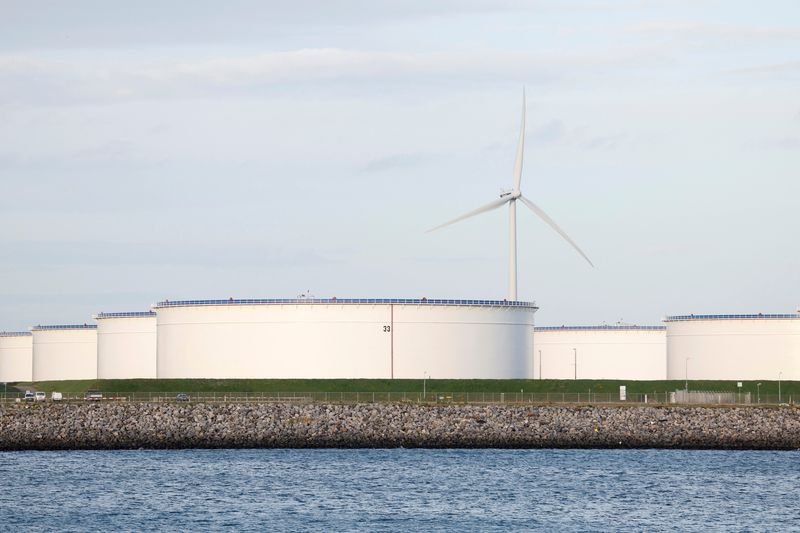Commodities
Oil falls over 1% as concerns about Mideast supply ease


© Reuters. FILE PHOTO: Maasvlakte Olie Terminal, which specialised in the storage and transhipment of crude mineral oil is seen at the Port of Rotterdam in Rotterdam, Netherlands, November 1, 2022. REUTERS/Piroschka van de Wouw
By Alex Lawler
LONDON (Reuters) -Oil slipped more than 1% on Monday as concern eased about the Israel-Hamas war affecting supply from the region and as investors adopted caution ahead of this week’s U.S. Federal Reserve meeting and other indications of global economic health.
Crude had jumped 3% on Friday after Israel stepped up ground incursions into Gaza, stoking worries the conflict could expand in a region that accounts for a third of global oil output. However, that concern was fading on Monday, analysts said.
“There is a propensity for market users in all their guises to have at least some oil length going into the weekends and when the fear of conflict spread shows no validation come the early hours of Monday mornings’ openings, that fear hedge is ordinarily unwound,” said John Evans of oil broker PVM.
futures dropped 95 cents, or 1.1%, to $89.53 a barrel by 1217 GMT, while U.S. West Texas Intermediate crude was down $1.12, or 1.3%, at $84.42.
“Despite an escalation in the Hamas-Israel war, the ground invasion was widely expected,” said CMC Markets (LON:) analyst Tina Teng. “The weekend playout signals no further expansion into a wider regional war, which caused a retreat in oil prices.”
On Monday, Palestinians in northern Gaza reported fierce air and artillery strikes as Israeli troops backed by tanks pressed into the enclave with a ground assault that spurred more international calls to protect civilians.
As well as the Middle East, investors are focused on the outcome of Wednesday’s Federal Reserve meeting as well as on what earnings from the likes of tech giant Apple Inc (NASDAQ:) might indicate regarding the prospects for economic slowdown.
The Fed is widely expected to keep interest rates unchanged, while the central banks of Britain and Japan are also set to review their policies.
China reports its October manufacturing and services PMIs this week, with investors looking out for more signs that the economy of the world’s top crude importer is stabilising.
Commodities
Oil prices rise; U.S. crude inventories plunge, Russia-Ukraine truce eyed
Commodities
India’s Reliance to stop buying Venezuelan oil over US tariffs, sources say
Commodities
Oil prices climb on Venezuela supply worries

 Forex3 years ago
Forex3 years agoForex Today: the dollar is gaining strength amid gloomy sentiment at the start of the Fed’s week

 Forex3 years ago
Forex3 years agoUnbiased review of Pocket Option broker

 Forex3 years ago
Forex3 years agoDollar to pound sterling exchange rate today: Pound plummeted to its lowest since 1985

 Forex3 years ago
Forex3 years agoHow is the Australian dollar doing today?

 Cryptocurrency3 years ago
Cryptocurrency3 years agoWhat happened in the crypto market – current events today

 World3 years ago
World3 years agoWhy are modern video games an art form?

 Commodities3 years ago
Commodities3 years agoCopper continues to fall in price on expectations of lower demand in China

 Economy3 years ago
Economy3 years agoCrude oil tankers double in price due to EU anti-Russian sanctions























